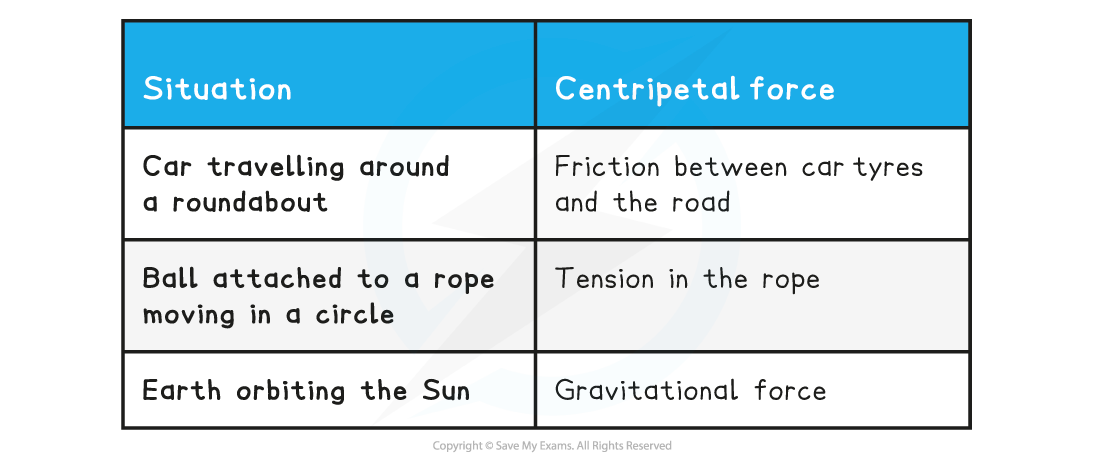Maintaining Circular Motion (Edexcel A Level Physics): Revision Note
Exam code: 9PH0
Maintaining Circular Motion
An object moving in a circle is not in equilibrium, it is constantly changing direction
Therefore, in order to produce circular motion, an object requires a resultant force to act on it
This resultant force is known as the centripetal force and is what keeps an object moving in a circle
The centripetal force F is defined as:
The resultant force towards the centre of the circle required to keep a body in uniform circular motion. It is always directed towards the centre of the body's rotation.

The tension in the string provides the centripetal force F to keep the hammer in circular orbit
Note: centripetal force and centripetal acceleration act in the same direction
This is due to Newton’s Second Law
The centripetal force is not a separate force of its own
It can be any type of force, depending on the situation, which keeps an object moving in a circular path
Examples of centripetal force

Examiner Tips and Tricks
Make sure you are able to give examples of centripetal forces, understanding that many types of familiar forces (e.g., gravity, electric) can act as centripetal forces.
A classic example that often comes up in your magnetic fields topic is the magnetic force on a charged particle, which is always centripetal. This is because the force acts at 90° to the charged particle's velocity, causing it to move in a circle.

Unlock more, it's free!
Did this page help you?